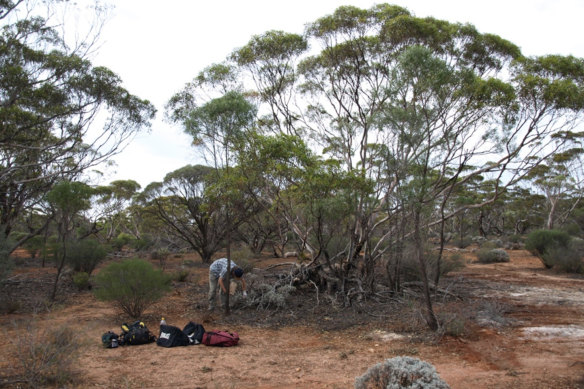- Sponsored
- Business
- Companies
- Bulls N' Bears
Lincoln uses modern tech to help drive uranium hunt
Brought to you by BULLS N’ BEARS
By Craig Nolan
Lincoln Minerals has exploited high-tech gravity data to reinvigorate its hunt for uranium in South Australia and will expedite its plans to drill a swag of new targets by bringing the program forward by three months.
Management says its enhanced knowledge of the basement geology at its Jungle Dam project on SA’s Eyre Peninsula will drive its next stage of exploration. A gravity survey from 2008 has been integrated with modern ground gravity imaging to refine the company’s drill targets that surround historic intercepts of uranium mineralisation.

Lincoln Minerals is expediting a drilling program at its Jungle Dam uranium play in South Australia.
Lincoln says the latest gravity and geological information sourced from SA Government data has been pivotal to improving its knowledge of the morphology of the basement ground in its project area.
‘We have made rapid progress in delineating additional highly-prospective uranium exploration targets.’
Lincoln Minerals chief executive officer Jonathan Trewartha
The geophysics have helped to refine the best locations for drilling, enabling the identification of potential trap sites along gravity lows coincident with paleochannel characteristics.
Lincoln Minerals chief executive officer Jonathan Trewartha said: “We have made rapid progress in delineating additional highly-prospective uranium exploration targets across our tenements using historic and newly-available data, which has reinforced the prospectivity of our Eyre Peninsula location.”
The company says the potential for steeply-dipping pyritic and graphitic stratigraphy to form a redox boundary conducive to deposition of uranium mineralisation is an area that could be targeted from the gravity imaging.
The drilling will aim to validate past results and provide management with essential structural data and knowledge of the ground’s lithology to improve its quality of exploration and assist with further target generation.
Lincoln has immediate plans to kick off its permitting process by preparing a Program for Environment Protection and Rehabilitation (PEPR), which is governed by the SA Department of Energy and Minerals (DEM). It says the drill program, expected to start in September, will be designed to try and confirm previous mineralisation that included a peak hit of 570 parts per million uranium oxide and other intersections of 4m at 300ppm and 6m going 200ppm.
Previous drilling provided poor core recovery, so the company is aiming to obtain sufficient geological insights from the new program to refine its exploration planning and to home in on the best targets for future campaigns. It says assays from drilling in 2007 show the mineralisation is typically associated with vein quartz-pyrite and occurs with increased levels of nickel and cobalt.
Of particular interest is a mineralised zone spanning 250m in width along a 400m strike. It is part of a bigger area of up to 2.5km that exhibits a biogeochemical signature in mallee leaves. Past exploration also outlined two key zones with the potential for higher levels of uranium in the region.
Lincoln believes its drill targets are in an area interpreted to be a paleochannel similar in style to ASX-listed Alligator Energy’s Samphire project, located south-east of Jungle Dam in the uranium-rich Eyre Peninsula. It sees several of its uranium targets sharing geological similarities to the Samphire project, which has a JORC-compliant resource of 11.4 million tonnes at 720ppm for 18.1 million pounds of uranium oxide.
According to Geoscience Australia, SA is considered the most uranium-friendly State in the nation as it actively supports exploration for the always-controversial metal. In fact, the project approvals process in SA has even been streamlined.
BHP’s Olympic Dam deposit in SA is considered one of the biggest uranium deposits in the world, containing more than two million tonnes of uranium oxide and helping the State’s uranium mines lead the nation’s production, with 5497 tonnes of uranium oxide produced in 2020.
With the company’s renewed enthusiasm for yellowcake coming at a time when the price of uranium has increased considerably – and with many nations around the world warming to its use as a source of clean energy – discovering a new deposit may well drive Lincoln forward at high speed.
Is your ASX-listed company doing something interesting? Contact: mattbirney@bullsnbears.com.au